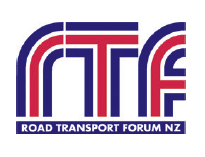Country‘s fastest roads are saving lives says RTF CEO
My holiday reading included a Stuff article stating that two of the country‘s fastest roads are actually saving lives.
“No one has died on either the Cambridge section of the Waikato Expressway, or the SH2 Tauranga Eastern Link Toll road, since they opened just over two years ago, figures released to Stuff show,” the article said.
These roads are rated at 110kph. The increased speed limit of 110kph was implemented on 11 December 2017, on both sections of road.
In the article police credited good road engineering for the safety of the roads.
We have also seen this on the newish Kapiti Expressway north of Wellington. With a speed limit of 100kph, there have been no fatal crashes between March 2017 and February 2019, and fewer serious and minor injury crashes than the previous route over the same period, which has speed limits of 60 to 80kph. In 2015-2016 the previous route had a lower speed limit and one fatal crash and more serious and minor injury crashes than the expressway. This demonstrates better design and engineering of roads leads to fewer accidents, injuries and deaths.
This is in line with experiences in other jurisdictions – if the road is well engineered, safety is improved. The most notable example is the Autobahn (highways) in Germany, where much of the roads have no speed limit. The number of crashes, and injury and death rates from those crashes, is lower on the Autobahn than on either urban or rural roads in Germany.
The German government adopts the principle that motorists can decide for themselves what is the appropriate speed for the conditions and their skill set; they can calculate their own risk.
Sweden has the lowest road toll in the EU. Sweden has more than 2000km of motorway and a further 6000km of expressway. The speed limits on its motorway network are up to 120kph.
In fact, moves to lower speed limits in Europe centre more on environmental arguments – less CO2 emissions at lower speeds – than on a road safety focus, and they are often politically motivated.
If we look at the French Government – its 2018 decision to cut the speed limit on country roads by 10kph, to 80kph, was a major factor in the rise of the gilet jaunes (yellow vests) protest movement. Many people in rural France saw the move as an example of President Emmanuel Macron‘s urban elitism – a failure to understand the needs of people outside cities, who are totally reliant on their cars.
While there is no doubt that excessive speed causes road crashes to have consequences on the serious end of the scale, the New Zealand Government‘s laser-like focus on speed alone, is concerning. The NZ Transport Agency believes 87 percent of New Zealand roads have speed limits too high for the conditions. They cannot seriously think it is viable to reduce speed limits on 87 percent of our roads, and keep our economy as an export nation moving and growing.
Most other developed countries have faster speed limits because they have better roads. The equation is not difficult to grasp – well-engineered roads are safer. We believe that rather than slowing us down on the road, and subsequently slowing down our economy, the Government needs to be strategic and transparent in its decision-making. We need a long-term plan around what New Zealand requires from its transport network and investment has to be evidence-based.
The other holiday reading has of course, been the tragedy that is unfolding daily in Australia as bushfires grow and merge and more people, animals, homes, towns, and regions are impacted.
I want to do a shout out to the truckers of Australia who have been pulling out all stops to get water and essential supplies to those people, animals and areas who need it most.
This is a clear example of how vital roads and trucks are in times of natural disaster as the most reliable lifelines.
Nick Leggett, CEO, Road Transport Forum





